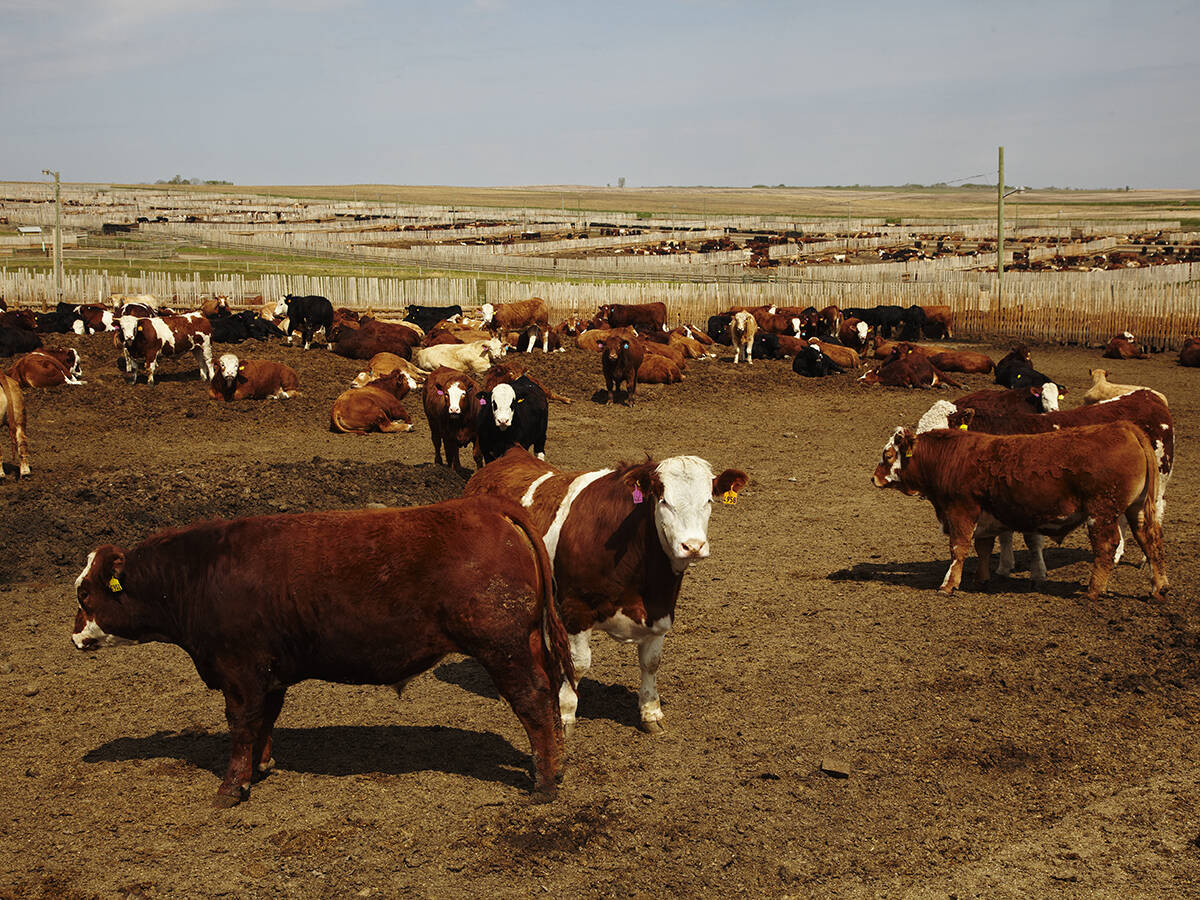This cattle market information is selected from the weekly report from Canfax, a division of the Canadian Cattlemen’s Association. More market information, analysis and statistics are available by becoming a Canfax subscriber by calling 403-275-5110 or at www.canfax.ca.
Fed cattle weak
Alberta fed steer weighed average prices were $165.63 per hundredweight, up $2.15 and heifers were $160.63 down $3 last week.
The heifer price was the lowest this year.
Dressed sales ranged $270.50-$275.50 delivered.
Read Also

Canfax cattle market report – November 13, 2025
The Canfax cattle market report for November 13, 2025. Fed & feeder cattle prices, butcher cow trends, and cutout market insights.
While the Western Canadian market was struggling, it was doing better than the American market which was under pressure from rainy weather that discouraged grilling, falling wholesale beef prices and ample market ready cattle supply.
Chicago cattle futures fell.
Alberta cash cattle were at an $11.18 premium to Nebraska cattle.
Prices fell short of breakeven, but the Canadian market was still signaling to sell cattle.
There were rumblings of May contract cattle being pulled ahead of schedule.
Premiums were paid for quick delivery cattle. Sales for the week of May 9 were $278-$280 delivered. Bids for the second half of May delivery were $265 and for June delivery were $252-$257.
The basis against the June Chicago lean cattle contract was +$6 to +$10 and was stronger than the five-year average.
Recently, more fed calves have been offered, but supplies remain manageable.
Last fall few calves were exported compared to 2014, which would indicate fed supplies would be larger into the second half of this year.
With larger fed supplies on the horizon Prices in the second half of the year could see a greater than usual decline.
There is a risk the summer market could fall back to the low $140s or lower.
Cash cattle in the southern U.S. Plains fetched US$124 per cwt., down $3 from the week before, while in the North prices were down $5.
Cow prices rise
D1, D2 cows ranged C$95-$108 to average $101.25, up 42 cents
D3 cows ranged $82-$97 to average $90.50, up $1.67.
Dressed bids were steady at around $195-$200 per cwt. delivered.
Butcher bulls fell 91 cents to average $127.82.
Weekly Western Canadian non-fed slaughter to April 23 rose 19 percent to 6,721 head.
Slaughter this year is up 12 percent at 116,556 head.
Weekly exports to April 16 were steady at 5,199 head.
This year exports are down nine percent at 79,409 head
Prices are expected to be steady.
Feeder price lower
On average, feeder steers fell $3.50 per cwt. last week and heifers were down almost $8 on lackluster demand and falling futures.
Steers 400-600 pounds fell $1-$3 and heifers were down $5.50-$8.50.
Feeders 600-800 lb. traded $2-$5.50 lower.
Heifers heavier than 800 lb. fell sharply.
Negative feeding margins on summer grass and in the feedlot continue to limit demand.
Sale volumes seasonally tightened 17 percent to 19,255 head. For the year auction volume is down four percent.
Weekly feeder exports to April 16 were 8,040 head. For the year they are down 55 percent.
Prices have fallen enough and the cattle futures market is so low that feedlots can’t manage their risk and mitigate negative feeding margins.
Grass interest remains limited but should help in coming weeks
Bred cows ranged $1,600 to $2,100 and cow-calf pairs ranged $1,800-$2,950.
U.S. beef fall
The U.S. Choice cutout was US$212.50, down $8.22 per cwt. and Select was $203.09, down $9.68.
Although beef fell, so did cattle prices allowing packers to maintain positive margins and increase slaughter rates.
Packers are current in their marketing and carcass weights are falling, although still heavier than last year at this time.
The lower wholesale beef price should encourage retailers to feature beef and boost demand, which was put off last summer by the record high prices.
Weekly Canadian cutout values to April 16 saw AAA rise C$2.88 to $284.20 and AA rise $5.22 to $278.75.
The AAA/AA spread usually widen in spring, but this year it has narrowed in five of the past six weeks, from $11 in early March to $5 in mid-April. Reduced AA production supported its price. The AAA-Choice spread narrowed to -41 cents per cwt. while the AA-Select spread was at +$6.41.














